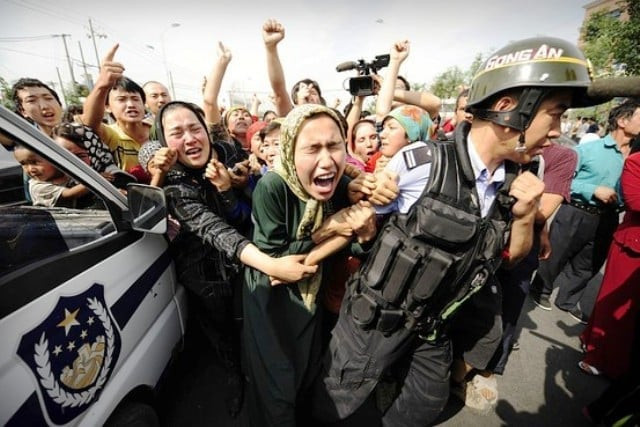
The nationality original to Xinjiang is called Uighur and is Muslim by faith. Its exiled representatives in Germany had their own version of the incident, calling the assailants people made desperate because they “could no longer bear China’s systematic repression, and have been denied outlets for peaceful protest”. The problem is ethnic-religious and relates to the universal phenomenon of sub-identities inside a nation state, with some dubious input from the outside. The Chinese recipe for the problem’s solution is rapid economic growth, nation-building and prosperity of the common man. Some of the elements are familiar to us. The Uighur community feels overwhelmed by the movement of the majority Han Chinese into the province; and there are clear ethnic-linguistic markers that the resulting contrast of talents throws up as contributors to intra-state conflict. The Chinese solution is also well accepted.
In fact, one reason we give for the unrest in our own province of Balochistan is long periods of neglect and lack of economic progress. While it is questionable that India and the US have and are fomenting trouble in Balochistan, China is clear that the Xinjiang violence despite high growth has been fanned by religious-jihadi movements percolating in two neighbouring states: Pakistan and Kazakhstan. Both states have joined the Shanghai Forum organised by China to prevent the rise of terrorism in the region. Pakistan has taken effective action against al Qaeda-linked elements in our Tribal Areas attracting Uighur recruits from Xinjiang. The Chinese authorities have recognised this and have been very understanding, despite capturing local terrorists who confessed to receiving training in Waziristan. Like Balochistan, Xinjiang is mineral-rich and is strategically crucial to the security of China. Like India (Assam) and Pakistan, movements of separatism have been based on the collective awareness — or illusion — about the minerals as pillars of a new sustainable state. The truth, however, is that such states are not viable for other reasons, as Sardar Ataullah Mengal recently tried to tell the Baloch rebels. What is viable is economic development mixed liberally with autonomy. And this is what Pakistan seems to aim at in this late hour. However, in China, despite development and autonomy the nature of terrorism, because of its religious base, refuses to accept the modern state.
In Pakistan, opinion is overwhelmingly sympathetic to the Chinese position, not only because sub-states are mostly unviable, but because terrorism simply decreases stability of a modern state. In 2010, the capital of Xinjiang, Urumqi, experienced widespread rioting, after which the Chinese government pumped in $100 billion over a five-year period. More realistically, it created economic zones to link the province closer to ‘Pakistan and the seven other neighbouring countries that border Xinjiang’. Unfortunately, the 2010 uprising at Urumqi was spearheaded by elements that took their training in the camps of East Turkestan Islamic Movement (ETIM) — declared terrorist by the UN in 2002 — inside Pakistan, most probably in the terrorist camps organised by al Qaeda. Our ISPR chief, Major-General Athar Abbas, underlined on August 5, 2010, that “the Pakistan Army has been and would continue operations against ETIM, and our cooperation (with China) will continue”.
What joins Pakistan and China is the common struggle against terrorism. The future of Central Asia is tied to the economic pre-eminence of China as a source of investment. And Central Asia is bound to become economically connected with South Asia through the territorial mediation of Pakistan.
Published in The Express Tribune, March 5th, 2012.














COMMENTS
Comments are moderated and generally will be posted if they are on-topic and not abusive.
For more information, please see our Comments FAQ